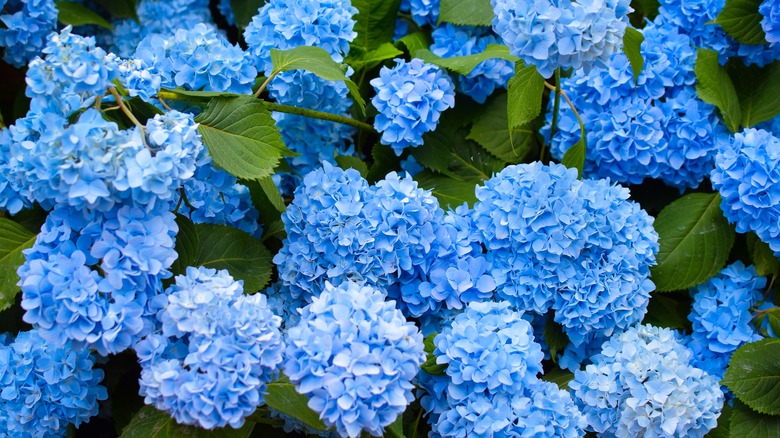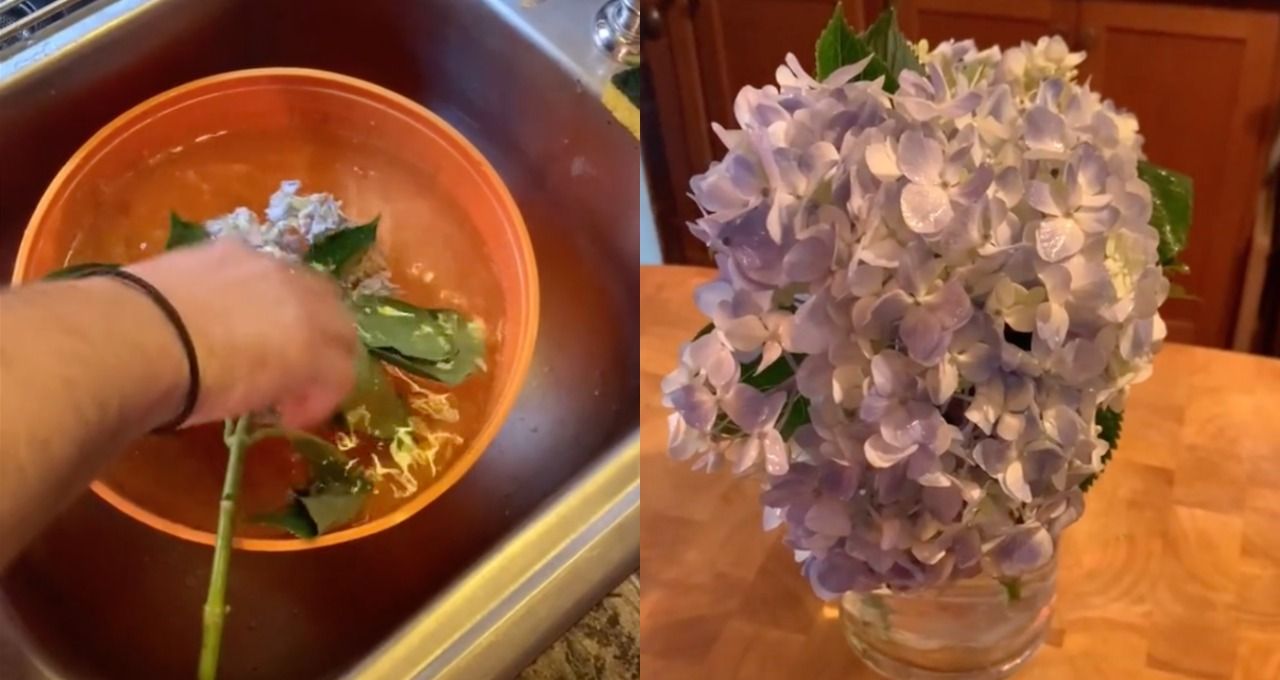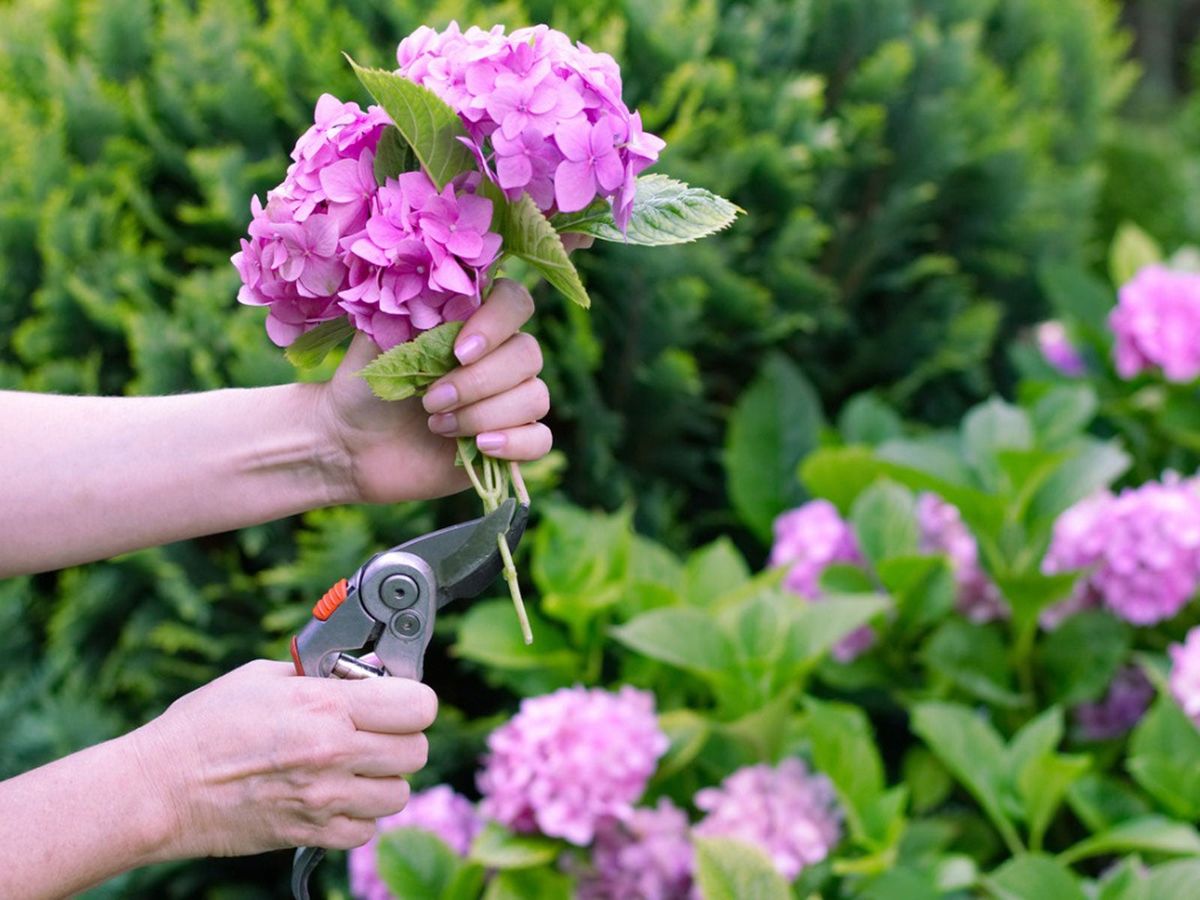The Secret to Refreshing Cut Hydrangeas
Cut hydrangeas are a popular choice for floral arrangements and bouquets, but they can quickly wilt and lose their beauty if not properly cared for. Wilting hydrangeas can be a frustrating problem, especially if you’ve invested time and money into creating a beautiful bouquet or arrangement. However, there is a simple solution to revive cut hydrangeas and extend their vase life: soaking them in cold water.
Soaking hydrangeas in cold water is a common practice among florists and flower enthusiasts, and for good reason. This technique can help to rehydrate the stems, reduce bacterial growth, and prevent ethylene production, all of which can contribute to the flowers’ decline. By soaking hydrangeas in cold water, you can enjoy your cut flowers for longer and keep them looking their best.
The benefits of soaking hydrangeas in cold water are numerous. Not only can it help to extend the vase life of your cut flowers, but it can also help to preserve their color and texture. This is especially important for hydrangeas, which are known for their delicate, papery blooms. By keeping the stems hydrated and reducing bacterial growth, you can help to prevent the flowers from becoming discolored or developing unsightly brown spots.
In addition to extending the vase life of cut hydrangeas, soaking them in cold water can also help to enhance their appearance. By rehydrating the stems and reducing bacterial growth, you can help to restore the flowers’ natural beauty and vibrancy. This can be especially important if you’re using your cut hydrangeas in a bouquet or arrangement, as it can help to create a more visually appealing display.
Why Cold Water is Essential for Hydrangea Revival
Cold water is the key to reviving wilting hydrangeas, and it’s essential to understand the science behind why it’s so effective. When hydrangeas are cut, they begin to lose moisture and nutrients, leading to wilting and discoloration. Soaking them in cold water helps to rehydrate the stems, reducing the risk of bacterial growth and ethylene production.
One of the main reasons cold water is effective is that it helps to slow down the metabolic process of the hydrangea. When the stems are submerged in cold water, the cells are able to absorb moisture and nutrients more slowly, reducing the risk of over-absorption and subsequent wilting. Additionally, cold water helps to reduce the production of ethylene, a gas that promotes aging and senescence in plants.
Cold water also helps to reduce bacterial growth, which can be a major contributor to the decline of cut hydrangeas. When bacteria are present in the water, they can multiply rapidly, producing toxins that can damage the plant. By using cold water, you can slow down the growth of bacteria, reducing the risk of infection and promoting healthy plant growth.
Furthermore, cold water helps to preserve the natural texture and color of the hydrangea. When the stems are submerged in cold water, the cells are able to maintain their natural turgor pressure, reducing the risk of shrinkage and discoloration. This is especially important for hydrangeas, which are known for their delicate, papery blooms.
In order to get the most out of soaking your hydrangeas in cold water, it’s essential to use the right temperature. Water that is too warm can actually promote bacterial growth and ethylene production, while water that is too cold can cause the plant to become stressed. The ideal temperature for soaking hydrangeas is between 40°F and 50°F (4°C and 10°C), which is cool enough to slow down bacterial growth and ethylene production, but not so cold that it causes stress to the plant.
How to Soak Hydrangeas in Cold Water for Maximum Effect
To get the most out of soaking your hydrangeas in cold water, follow these simple steps:
Step 1: Prepare a container filled with cold water. The ideal temperature for soaking hydrangeas is between 40°F and 50°F (4°C and 10°C). You can use a vase, bucket, or any other container that is large enough to hold the stems of your hydrangeas.
Step 2: Trim the stems of your hydrangeas at an angle using a sharp knife or pruning shears. This will help to increase the surface area of the stem, allowing it to absorb water more easily.
Step 3: Remove any lower leaves from the stems of your hydrangeas. This will help to prevent bacterial growth and reduce the risk of infection.
Step 4: Place the stems of your hydrangeas in the cold water, making sure that the cut ends are fully submerged. You can add a floral preservative to the water to help extend the life of your hydrangeas.
Step 5: Allow your hydrangeas to soak in the cold water for 2-4 hours. This will give them enough time to rehydrate and recover from any stress or damage.
Step 6: After the soaking process is complete, remove your hydrangeas from the water and gently shake off any excess moisture. You can then arrange them in a vase or container, making sure to maintain the water level and monitor their condition.
In addition to following these steps, you can also add a few extra ingredients to the water to enhance the soaking process. Some options include:
Floral preservatives: These can help to extend the life of your hydrangeas by preventing bacterial growth and reducing the risk of infection.
Sugar: Adding a small amount of sugar to the water can help to feed your hydrangeas and promote healthy growth.
Acidic ingredients: Adding a small amount of acidic ingredients, such as lemon juice or vinegar, can help to lower the pH of the water and promote healthy growth.
By following these steps and adding a few extra ingredients to the water, you can help to revive your wilting hydrangeas and keep them looking their best.
Tips for Preparing Your Hydrangeas for the Soak
To get the most out of soaking your hydrangeas in cold water, it’s essential to prepare them properly beforehand. Here are some tips to help you prepare your hydrangeas for the soak:
Trim the stems: Trimming the stems of your hydrangeas at an angle can help to increase the surface area of the stem, allowing it to absorb water more easily. Use a sharp knife or pruning shears to trim the stems, and make sure to cut just above a node (the point where a leaf meets the stem).
Remove lower leaves: Removing lower leaves from the stems of your hydrangeas can help to prevent bacterial growth and reduce the risk of infection. Use a pair of scissors or pruning shears to remove any leaves that will be below the waterline.
Use floral preservatives: Floral preservatives can help to extend the life of your hydrangeas by preventing bacterial growth and reducing the risk of infection. You can add a floral preservative to the water before soaking your hydrangeas, or use a preservative specifically designed for hydrangeas.
Check for damage: Before soaking your hydrangeas, check for any damage or signs of stress. If your hydrangeas are already showing signs of wilting or discoloration, it may be best to use a different method to revive them.
Use clean equipment: Make sure to use clean equipment when preparing your hydrangeas for the soak. Wash your hands and any tools you’ll be using with soap and water, and make sure the container you’ll be using is clean and free of any debris.
By following these tips, you can help to ensure that your hydrangeas are properly prepared for the cold water soak and get the most out of this simple and effective method for reviving them.
Common Mistakes to Avoid When Soaking Hydrangeas
While soaking hydrangeas in cold water is a simple and effective way to revive them, there are some common mistakes to avoid in order to get the best results. Here are some mistakes to watch out for:
Using warm water: Warm water can actually cause more harm than good when it comes to reviving hydrangeas. It can promote bacterial growth and ethylene production, which can lead to further wilting and discoloration. Always use cold water when soaking hydrangeas.
Soaking for too long: While soaking hydrangeas in cold water can be beneficial, soaking them for too long can cause more harm than good. Soaking for more than 4-6 hours can cause the stems to become waterlogged, leading to root rot and other problems.
Not changing the water frequently enough: Failing to change the water frequently enough can lead to bacterial growth and ethylene production, which can cause the hydrangeas to wilt and discolor. Make sure to change the water every 2-3 days to keep the hydrangeas fresh and healthy.
Not trimming the stems: Failing to trim the stems of the hydrangeas can prevent them from absorbing water properly, leading to further wilting and discoloration. Always trim the stems at an angle before soaking the hydrangeas in cold water.
Using contaminated water: Using contaminated water can introduce bacteria and other microorganisms into the water, which can cause the hydrangeas to wilt and discolor. Always use clean and fresh water when soaking hydrangeas.
By avoiding these common mistakes, you can help to ensure that your hydrangeas receive the best possible care and can thrive in their environment.
Alternative Methods for Reviving Hydrangeas
While soaking hydrangeas in cold water is a simple and effective way to revive them, there are other methods that can also be used to revive these beautiful flowers. Here are some alternative methods for reviving hydrangeas:
Floral sprays: Floral sprays can be used to revive hydrangeas by providing them with a quick burst of moisture and nutrients. These sprays can be applied directly to the flowers and can help to revive them quickly.
Misting with water: Misting hydrangeas with water can help to revive them by providing them with a gentle and consistent supply of moisture. This method can be especially effective for hydrangeas that are exposed to dry air or high temperatures.
Hydrating gel: Placing the stems of hydrangeas in a hydrating gel can help to revive them by providing them with a constant supply of moisture and nutrients. This method can be especially effective for hydrangeas that are cut and arranged in a vase.
Floral foam: Using floral foam can help to revive hydrangeas by providing them with a stable and consistent supply of moisture and nutrients. This method can be especially effective for hydrangeas that are arranged in a vase or container.
Refrigeration: Refrigerating hydrangeas can help to revive them by slowing down the aging process and preventing bacterial growth. This method can be especially effective for hydrangeas that are cut and arranged in a vase.
By using these alternative methods, you can help to revive your hydrangeas and keep them looking their best. Remember to always use clean and fresh water, and to avoid using warm water or soaking the hydrangeas for too long.
How to Care for Your Hydrangeas After the Soak
After soaking your hydrangeas in cold water, it’s essential to provide them with proper care to ensure they continue to thrive. Here are some tips on how to care for your hydrangeas after the soak:
Arrange them in a vase: Once your hydrangeas have finished soaking, arrange them in a vase or container filled with fresh, cold water. Make sure the water level is below the base of the stems to prevent the stems from sitting in water.
Maintain the water level: Check the water level daily and add fresh, cold water as needed. Make sure the water level is always below the base of the stems to prevent the stems from sitting in water.
Monitor their condition: Check your hydrangeas daily for signs of wilting, discoloration, or bacterial growth. If you notice any of these signs, remove the affected flowers or stems and replace them with fresh ones.
Keep them cool: Hydrangeas prefer cooler temperatures, so keep them away from direct sunlight, heat vents, and warm appliances. This will help to prolong their vase life and prevent them from wilting.
Avoid drafts: Hydrangeas are sensitive to drafts, so keep them away from windows, doors, and air conditioning vents. This will help to prevent them from drying out and wilting.
By following these tips, you can help to ensure your hydrangeas continue to thrive after the soak and enjoy their beautiful blooms for a longer period.
Conclusion: Reviving Hydrangeas with Cold Water for Long-Lasting Beauty
Reviving wilting hydrangeas with a simple water soak is a effective and easy way to extend their vase life and enhance their appearance. By soaking hydrangeas in cold water, you can help to rehydrate the stems, reduce bacterial growth, and prevent ethylene production, all of which can contribute to the flowers’ decline.
By following the steps outlined in this article, you can help to ensure that your hydrangeas receive the best possible care and can thrive in their environment. Whether you’re a professional florist or a hobbyist, soaking hydrangeas in cold water is a simple and effective method for reviving these beautiful flowers.
In addition to soaking hydrangeas in cold water, there are other methods that can be used to revive them, such as using floral sprays, misting with water, or placing the stems in a hydrating gel. However, soaking hydrangeas in cold water is one of the most effective and easy-to-use methods available.
By incorporating this simple technique into your flower care routine, you can help to ensure that your hydrangeas remain fresh and beautiful for a longer period. So next time you notice your hydrangeas starting to wilt, try soaking them in cold water and see the difference for yourself.
With proper care and attention, hydrangeas can be a stunning addition to any arrangement or bouquet. By reviving wilting hydrangeas with a simple water soak, you can help to bring out the best in these beautiful flowers and enjoy their beauty for a longer period.







